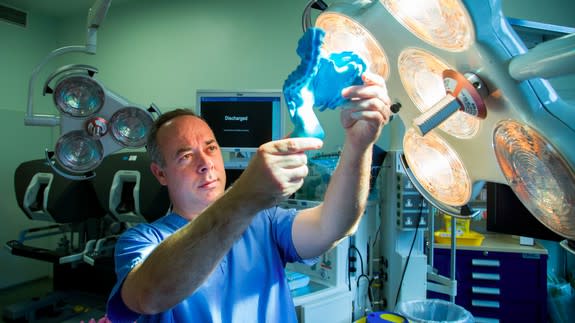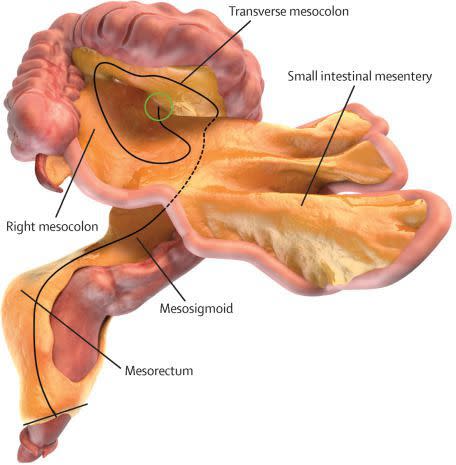Another organ has been hiding in your belly all along

This week, as you dream up ways to improve yourself in 2017, give yourself a pat on the back: You've already made a significant change this year, from deep within your belly.
You technically gained an organ.
Irish researchers have confirmed that the mesentery — a fold of membrane that connects the intestine to the abdomen — is its own continuous organ, and not a series of fragmented parts like experts had previously thought.
SEE ALSO: This bacteria is getting harder for kids to fight
The discovery could create a new field of "mesenteric" science and may help doctors better understand and treat abdominal diseases, said Calvin Coffey, a professor of surgery at University of Limerick's Graduate Entry Medical School.

Image: The Lancet Gastroenterology & Hepatology
"We are now saying we have an organ in the body which hasn't been acknowledged as such to date," he said in a news release.
Coffey published his peer-reviewed findings in the November issue of The Lancet Gastroenterology & Hepatology, a top medical journal on the digestive system.
Mashable was unable to reach Coffey for comment by the time of publication.
An organ is considered to be a self-contained body part that serves a specific vital function. The heart, for instance, is a muscular organ that pumps blood through our blood vessels.
Researchers say they still don't quite understand the mesentery's key functions, beyond the obvious role as a connective layer.
One of the world's earliest depictions of the mesentery was produced by the Italian Renaissance artist Leonardo da Vinci. While his drawing and subsequent medical illustrations showed the mesentery as a continuous structure, in the past century scientists came to believe it was a series of broken-up pieces, and thus less medically significant.

Image: Digestive surgery/researchgate
In 2012, Coffey and his colleagues first showed through microscopic analyses that the fold of membrane was, in fact, a single connected structure.
Over the last four years, the team continued to collect evidence confirming the mesentery's classification as an organ, which culminated with the November paper.
The research prompted the publishers of Gray's Anatomy, one of the world's best-known medical textbooks, to update the entry for mesentery.
Elsevier, which publishes both Gray's Anatomy and The Lancet journal, included the reclassification of mesentery in its 41st edition of Gray's, which came out September 2015, Mashable confirmed.
Coffey said that better understanding and further scientific study of the mesentery could result in less invasive abdominal surgeries, fewer complications and faster patient recovery.
"When we approach it like every other organ...we can categorize abdominal disease in terms of this organ," he said in the news release.
"This is relevant universally as it affects all of us," he added. "Up to now there was no such field as mesenteric science."
Related:
For more news videos visit Yahoo View, available now on iOS and Android.

